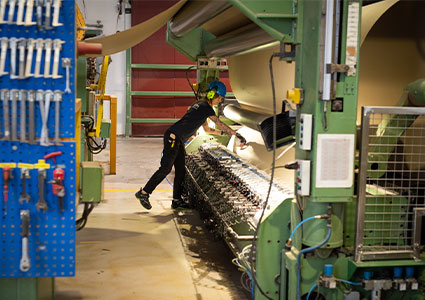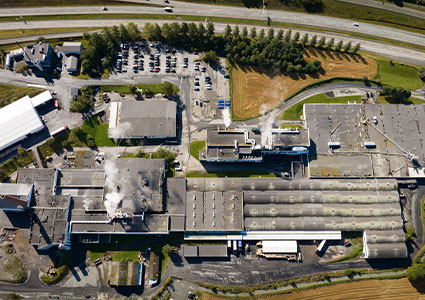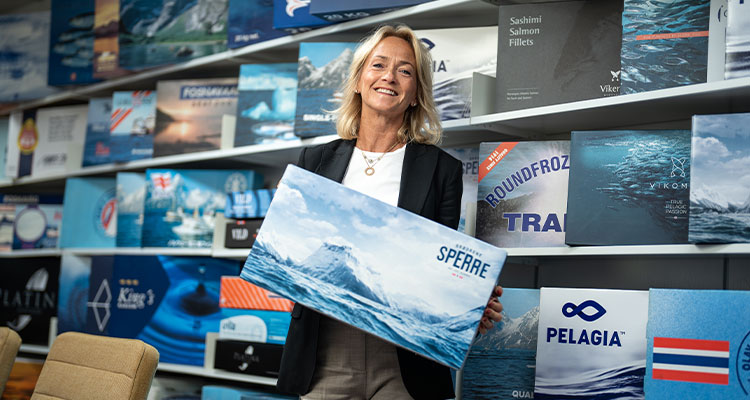One year later: Ranheim Paper & Board boosts production, expands market reach, and optimizes supply chain efficiency
Owned by Fundermax, Ranheim Paper & Board (Ranheim) boasts a long history as one of the world’s northernmost paper mills, producing high-quality paper and solid board. Since its establishment in 1884 as Ranheim Cellulosefabrik by mechanical engineer Lauritz Jenssen, the Norwegian company has been driven by its focus on innovation. A year ago, we had the opportunity to take a closer look at Ranheim’s operations. Today, we catch up with Ørjan Knutzen, Head of Supply Chain, who uncovers the main developments that occurred within the business over the last 12 months. “On the 1st of May 2024, we implemented a new ERP system called SAP, which was a time-consuming process before and after going live. Consequently, its implementation has placed strain on several key resources, reducing our capacity to focus on many more areas of the business,” he begins.
 Nonetheless, Ranheim was able to revamp its company structure, as Ørjan elaborates. “As of today, we operate from three sites. Located in Trondheim, our main facility houses a paper mill and handles packaging production. A couple of years ago, we acquired a packaging manufacturing company with two sites, thereby bringing our total number of facilities to three. However, due to its lower production volumes, we are closing production at our recently acquired facilities in Ålesund and relocating its production to our main site in Trondheim. Instead of completely shutting the Ålesund facility, we are transforming it into a distribution center serving Norway’s west coast. This region is a major stronghold to reach our customer base, as the packaging materials and boxes we deliver are heavily used in the fishing and seafood industry, which is particularly prominent in the western part of Norway. By consolidating our distribution, logistics, and warehousing activities at the Ålesund site, we aim to strengthen our position in terms of distribution. Previously, our distribution was fragmented and difficult to follow up, as it was managed by multiple external warehouses and partners. In contrast, handling distribution in-house and leveraging our new ERP system will make us more efficient.”
Nonetheless, Ranheim was able to revamp its company structure, as Ørjan elaborates. “As of today, we operate from three sites. Located in Trondheim, our main facility houses a paper mill and handles packaging production. A couple of years ago, we acquired a packaging manufacturing company with two sites, thereby bringing our total number of facilities to three. However, due to its lower production volumes, we are closing production at our recently acquired facilities in Ålesund and relocating its production to our main site in Trondheim. Instead of completely shutting the Ålesund facility, we are transforming it into a distribution center serving Norway’s west coast. This region is a major stronghold to reach our customer base, as the packaging materials and boxes we deliver are heavily used in the fishing and seafood industry, which is particularly prominent in the western part of Norway. By consolidating our distribution, logistics, and warehousing activities at the Ålesund site, we aim to strengthen our position in terms of distribution. Previously, our distribution was fragmented and difficult to follow up, as it was managed by multiple external warehouses and partners. In contrast, handling distribution in-house and leveraging our new ERP system will make us more efficient.”
According to Ørjan, Ranheim’s distribution center will become operational at the end of June. “Ahead of the Ålesund site ceasing production in March, we are relocating our machines and physically preparing the sites. Still, there are many other factors we need to work on and acquire to make the site operational, including IT systems, equipment like forklifts, storage bins, and making some minor building alterations. Additionally, we need to reconfigure the material flow into and out of the warehouse, as our current setup involves collaboration with various freight providers. This will entail renegotiating transportation routes, agreements, pricing, and more with freight providers and other suppliers to streamline transport from our production sites in Trondheim and the Netherlands to the distribution center. Moreover, the distribution process from the center to customers will require more work due to the diverse needs of our customer base in terms of storage space for their raw materials. Although the Ålesund facility presents a mix of challenges, it is poised to become our largest storage and distribution site for packaging operations. The distribution center will have a storage capacity of approximately 13,000-to-15,000 pallets – three times greater than our Trondheim facility, which can accommodate about 4500 pallets,” he shares.
Preparing for future demand
Another major focal point for Ranheim in 2024 involved rebuilding one of its paper machines. “We own two paper machines; one called PM5 – which stands for Paper Machine number 5 – and the other named PM6. Over the past two years, we have made substantial investments in rebuilding and upgrading PM5. In 2024, we initiated the second stage of this rebuild, following the first phase that started back in 2023. This move has led to a considerable increase in our production capacity, not only for PM5 but also affecting overall production by extension to PM6. The interconnectedness of the two machines through the raw materials system means that PM6 benefits from the improvements made to PM5. In total, we have significantly increased our production capacity by between ten and 15 percent, which is a lot for a company of our size within the industry,” says Ørjan.
By boosting both its production and distribution capabilities, Ranheim has been able to expand its reach and attract new clients. “Our customer base has noticeably grown within both the paper and packaging segments. In the packaging domain, we have acquired 30 more customers in the fishing and seafood industry. Furthermore, we have broadened our reach by engaging with new customers in Greenland, where we have strengthened our presence. Given the prevalence of fisheries in Greenland, the North Sea, and the North Atlantic regions, this expansion aligns well with our strategic focus. On the paper front, we are producing more and more paper that we not only use internally to make packaging materials but also sell to external customers. A key area of emphasis for us is one of our flagship products, a special paper utilized in the production of laminate plates for the construction industry, known as compact laminates. Our customers use this paper as a raw material in their production processes, contributing to an uptick in our sales within this sector. We have observed two primary factors driving our success in this area: first, our own production developments and increased volumes; and second, the fact that other manufacturers of this special paper have chosen to shift away from it and focus on a different area. This change in focus by competitors has created an opportunity for us to bolster our position in the market,” Ørjan enlightens. 
Continued improvement
Taking such big steps at a high pace is proving successful for Ranheim, though Ørjan mentions that these improvements present their own set of challenges. “In 2025, our priority is to further optimize our production efficiency, especially within the packaging division because increasing volumes so fast requires subsequent adjustments. Additionally, overall planning and joint integrated planning throughout our processes is a complicated endeavor we must focus on this year. We are currently in the process of building a comprehensive framework to facilitate this optimization, including most functions in our value chain – from sales to production planning, production, and logistics purchasing – given the interconnectedness of these aspects. To that end, we are discussing with and learning from external companies that operate with similar processes and face comparable challenges. By doing so, we aim to extract the best practices from each company to refine our own processes. We anticipate that this approach will yield positive outcomes throughout 2025. All in all, we have identified around ten crucial focus areas for the year. These encompass aspects ranging from production and logistics to human resources and various functions within our organization and value chain,” he concludes.
From consolidating its distribution footprint to unlocking new production capacity, Ranheim is driving transformative change across every facet of its operations. By seamlessly integrating cutting-edge technologies and optimizing its supply chain, the company has positioned itself as an industry leader, poised to deliver unparalleled value to an expanding customer base in Norway and beyond.
